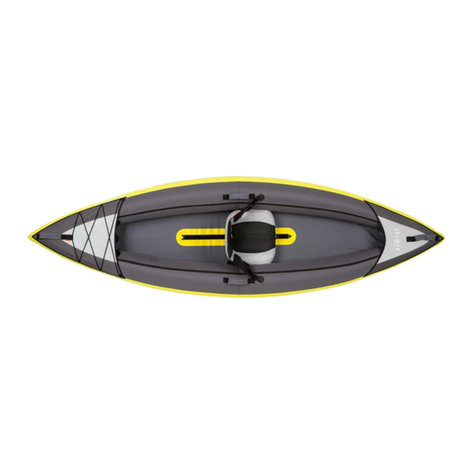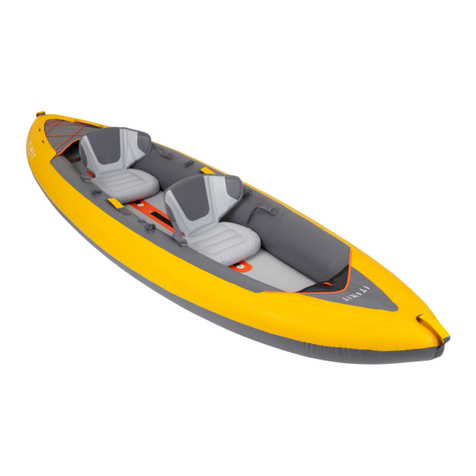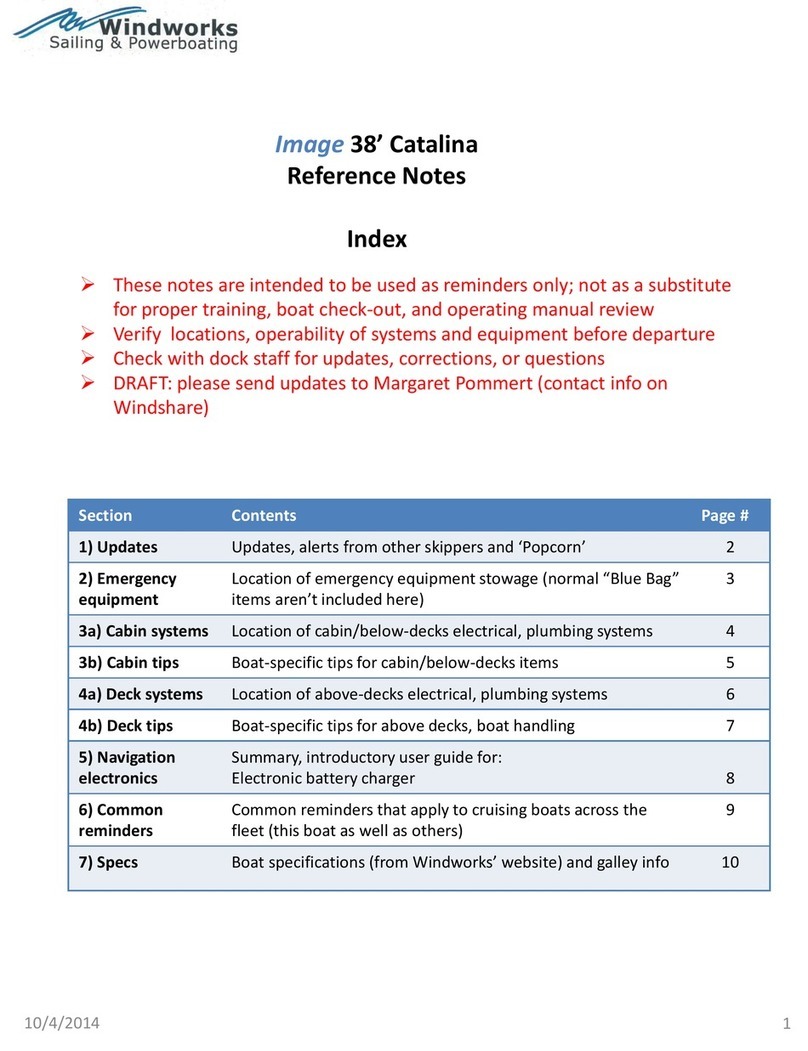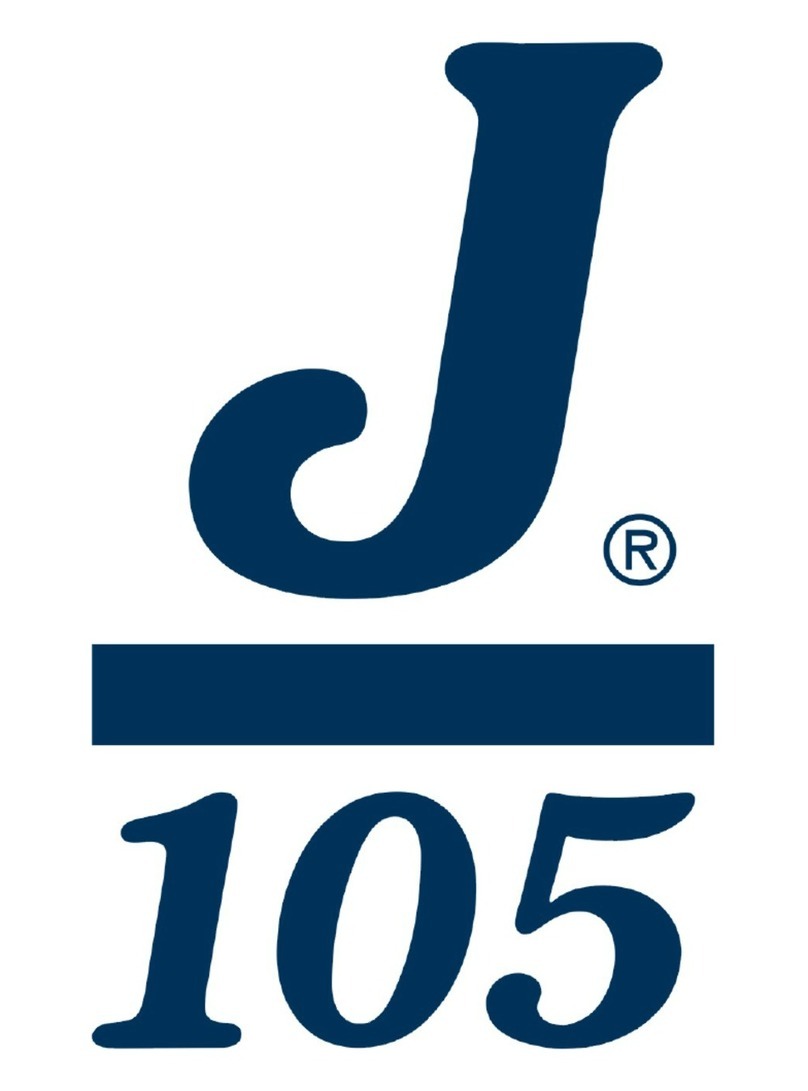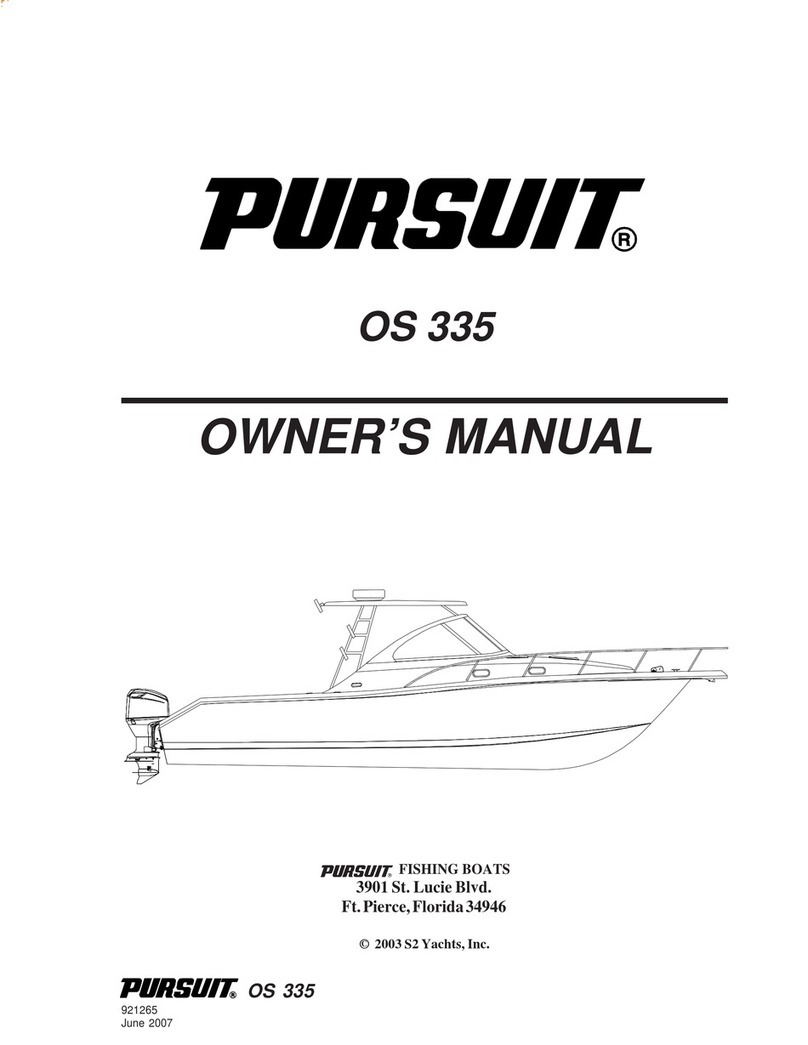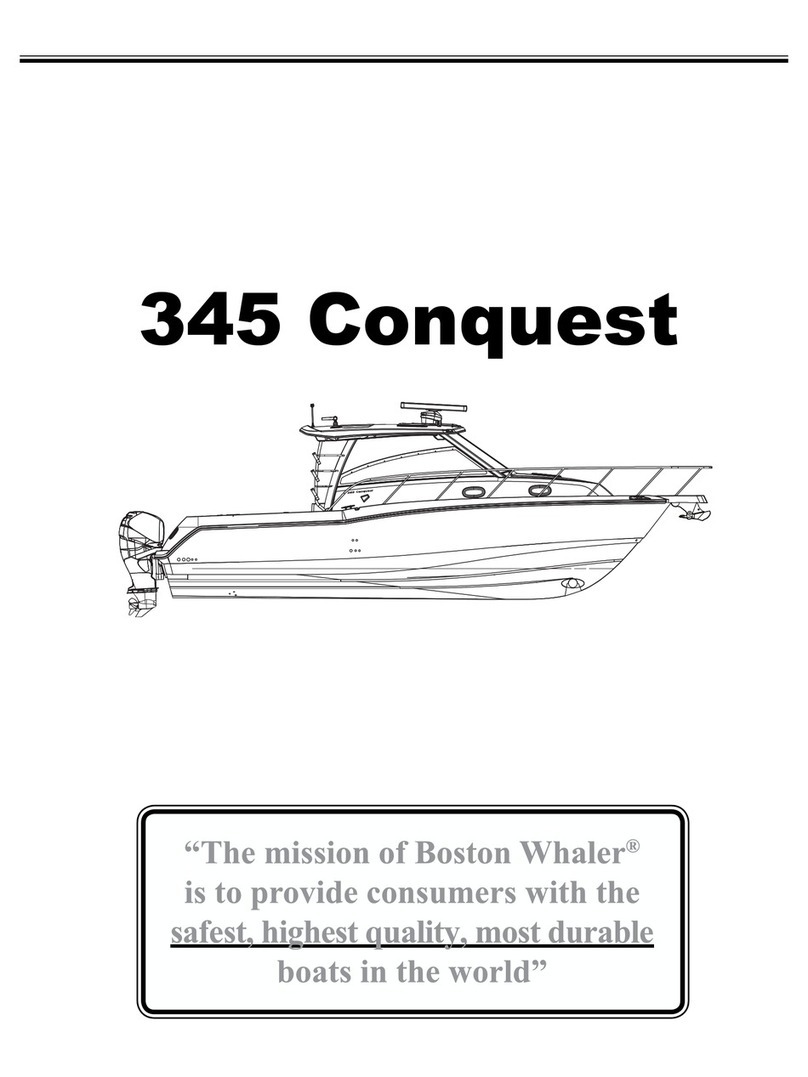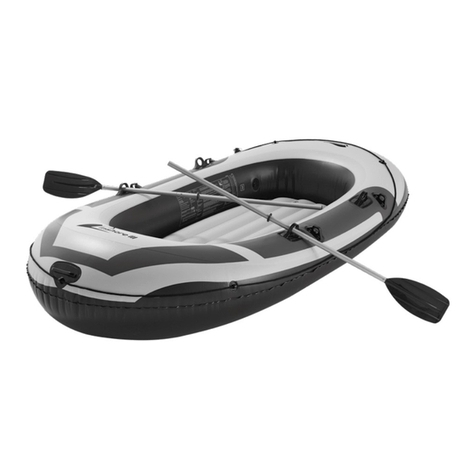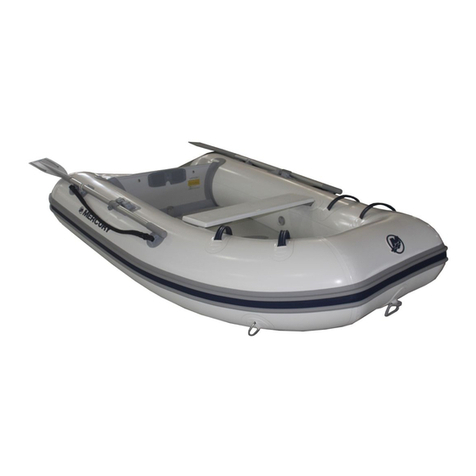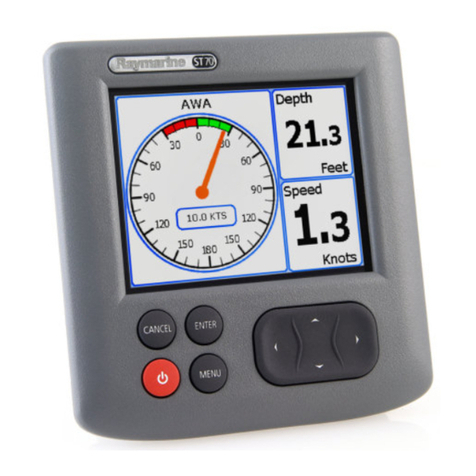Decathlon Tribord DINGHY 5S User manual

p.1

p.2

p.1
- DINGHY 5S - OWNER’S MANUAL -
CONGRATULATIONS FOR BUYING YOUR DINGHY TRIBORD 5S FROM DECATHLON !
• This manual has been designed to help you use your boat safely and enjoy it! It contains details of the boat, equipment supplied or tted and syems, as well as infor-
mation on how to use them. Read it carefully and get to know the boat before you use it.
This owner’s manual is not a lesson in sailing safety or seamanship. If it is your r boat or you have changed for a type of boat you are not familiar with, for your comfort
and safety, make sure that you acquire the experience handling and using it before taking its command. Our ores, your national sailing authority or yacht club will be
happy to inform you on your local sailing schools or competent inructors in your area.
• Check that your boat’s design category is suitable for the forecaed wind and sea conditions and that you and your crew are able to handle the boat in those
• conditions. Find out about local regulations and dangers to navigation.
• This manual contains information required for the usual maintenance of the boat, you mu refer to it to ensure your safety and durability of your boat.
• If you have any doubt on the maintenance and repair of your craft, contact our after-sales service, who will support you.
• Modications that may aect the safety features of your boat mu be planned, made and documented by competent a. The boat manufacturer cannot be held liable
for modications that they have not approved.
In some countries, a sailing permit or authorisation is required, or specic legislation applies.
Always maintain your boat correctly and take into account wear and tear over time or frequent or inappropriate use, if relevant.
Any boat – no matter how durable – can be severely damaged if it is misused. It is not compatible with safe sailing. Always adapt the speed and direction of your boat to
sea conditions.
• The crew on-board should have all the safety equipment (lifejackets or buoyancy ves, a paddle, etc) suitable for the type of boat and weather conditions, etc. This
equipment is compulsory in some countries. The crew should be familiar with the use of safety equipment and emergency safety manoeuvres (man overboard recovery,
towing, etc.); sailing schools and clubs regularly organise training sessions.
• It is recommended that all people wear appropriate buoyancy ves (lifejacket, personal buoyancy aid) when they are on the boat. Note that in some countries, it is
compulsory to wear a buoyancy ve that complies with national regulations.
PLEASE STORE THIS MANUAL IN A SAFE SPACE AND HAND IT TO THE NEW OWNER IF YOU SELL THE BOAT
TABLE OF CONTENTS
CHARACTERISTICS OF THE BOAT ..................................................................................................................................................................................................... P.2
IMPORTANT - SAFETY
................................................................................................................................................................................................................ P.3
USE ....................................................................................................................................................................................................................................... P.4
- ASSEMBLE
- HULL ................................................................................................................................................................................................................................................. P.13
- KEELS ................................................................................................................................................................................................................................................ P.15
- RUDDER BASE ................................................................................................................................................................................................................................. P.16
- SAIL ................................................................................................................................................................................................................................................... P.17
- INBOXING .......................................................................................................................................................................................................................................... P.24
- HOW TO :
- REDUCE THE SAIL ............................................................................................................................................................................................................................P.29
- REPAIR THE HULL ........................................................................................................................................................................................................................... P.32
- RECOVER FROM CAPSIZE ............................................................................................................................................................................................................. P.33

p.2
1. CHARACTERISTICS OF THE BOAT
Designer / Diributor : Tribord - DECATHLON SA.
Model : DINGHY TRIBORD / 5S
Design category : D
Boat designed to sail in winds not exceeding force 4 on the Beaufort scale and in corresponding waves (occasional waves maximum height 0.5m). Such conditions are
encountered in inland waters and coaal waters in fair weather.
Weight of the unladen boat (not loaded) : 40 kg
Maximum recommended load : 160 kg
WARNING
When loading the boat, never exceed the maximum recommended load. Always load the boat carefully and spread the load appropriately to keep the theore-
tical trim (approximately horizontal). The maximum recommended load includes the weight of all the people on board, provisions and personal belongings,
all equipment not included in the unladen boat’s weight, cargo (if applicable) and all consumable liquids
Air draft : 5.20 m Length : 308 cm
Draught : 0.33 m Width : 140 cm
The main means of propulsion : Sail
Sail plan : 5.7 sqm sail that can be reduced to 3 sqm by rolling the sail around the ma.
Manufacturer’s plate :
Some information is shown on the manufacturer’s plate xed on the boat. A comprehensive explanation of this information is lied in the captions below.
WARNING
Do not exceed the recommended maximum number of people. No matter how many people on-board, the total weight of people and equipment mu never
exceed the maximum recommended load. Always use the seats or seated places designed for that purpose.

p.3
2. IMPORTANT - SAFETY
Safety equipment on-board
In addition to the buoyancy aid equipment, we recommend that you have a paddle and tow line on-board.
Stability and buoyancy
Any change in the spread of load on-board (for example, adding additional equipment) may signicantly aect the ability, trim and performance of the boat;
- air tanks mu not be pierced
- breaking waves may signicantly aect ability..
Recovery from capsize
See P32
Information linked to the risk of re or explosion
Inspect your boat for damage prior to each use. If you identify any damage, do not use the product.
Avoid contact of inatable parts with sharp objects.
Inate to the optimal pressure indicated on the product under risk of over-ination and / or explosion.
Never unscrew the valve when the boat is inated to avoid any risk of rapid ejection of the valve.
Never lean over the valve when you are manipulating it (safety diagram) Never sail in ormy conditions.
Preventing falls overboard and getting back on board
In the event of a fall overboard, you can hold on to the dierent handles on the hull. We recommend that you re board from the back of the boat, using the handles on
either side of the rudder (1) and the handle on the deck (2) (see Diagram p33)
Attaching mobile parts
We recommend that mobile parts are carefully attached when the boat is underway, using the owage elaics located at the front of the boat.
Respect for the environmental
Keep informed of local environmental regulations in the area you are sailing and follow the codes of good practice.
We recommend you become familiar with the international regulations on pollution of the marine environment (Marpol) and follow the regulations.
Anchoring, mooring and towing
the handle on the front of the boat, identied by the pictogram enables you to faen a grapnel-type anchoring device (minimum 2.3 kg) and a towing syem.
When towing a second boat, you can attach a second 5S to the back of yours using the handles on the back of the boat, on either side of the transom.
Comment: To anchor safely, nd out about anchoring techniques before attempting it.
Other Decathlon Boat manuals
Popular Boat manuals by other brands

Jeanneau
Jeanneau SUN ODYSSEY 41 DS owner's manual
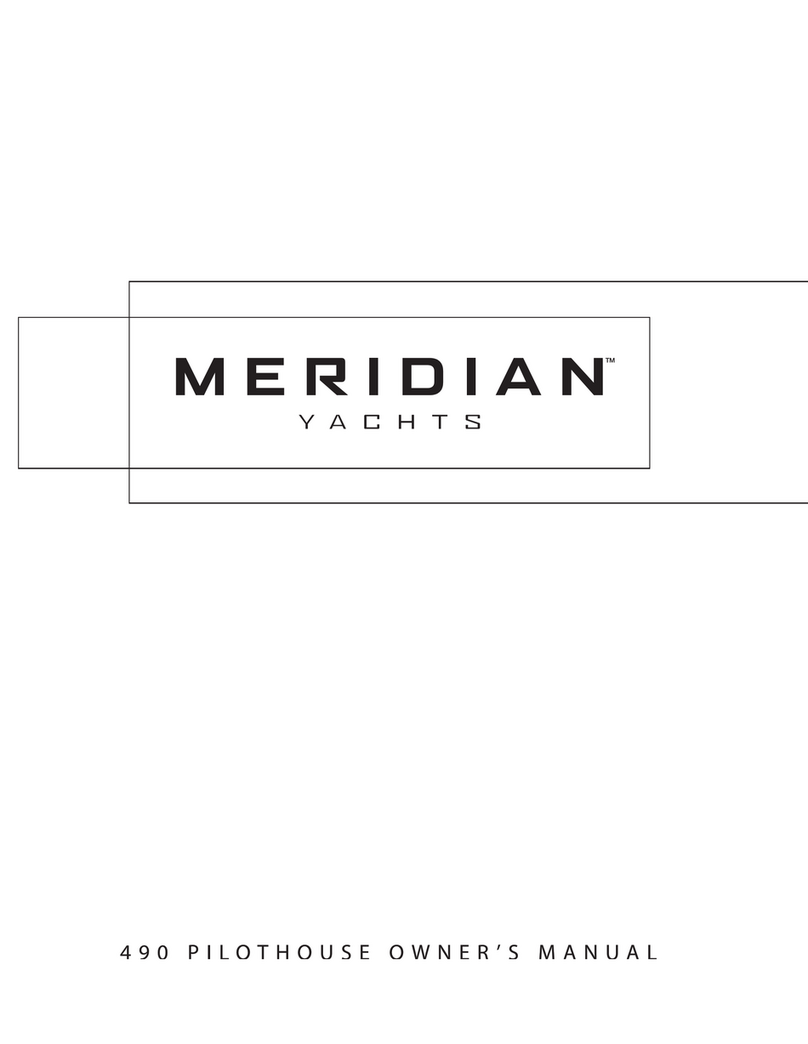
Meridian
Meridian 490 Pilothouse owner's manual
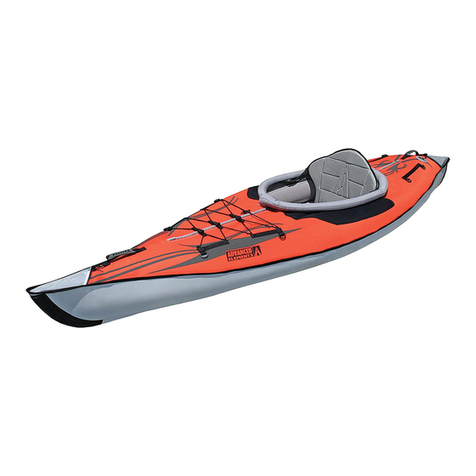
Advanced Elements
Advanced Elements AdvancedFrame Expedition AE1009 owner's manual
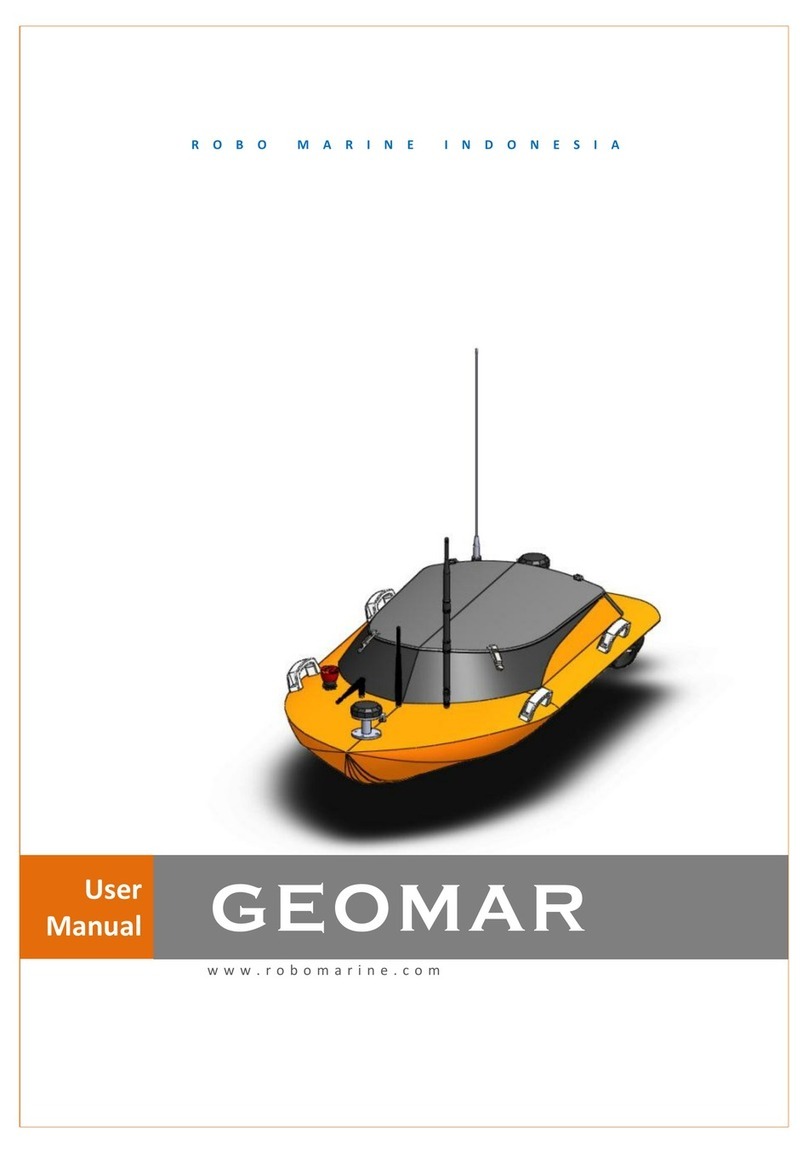
Robo Marine Indonesia
Robo Marine Indonesia GEOMAR user manual
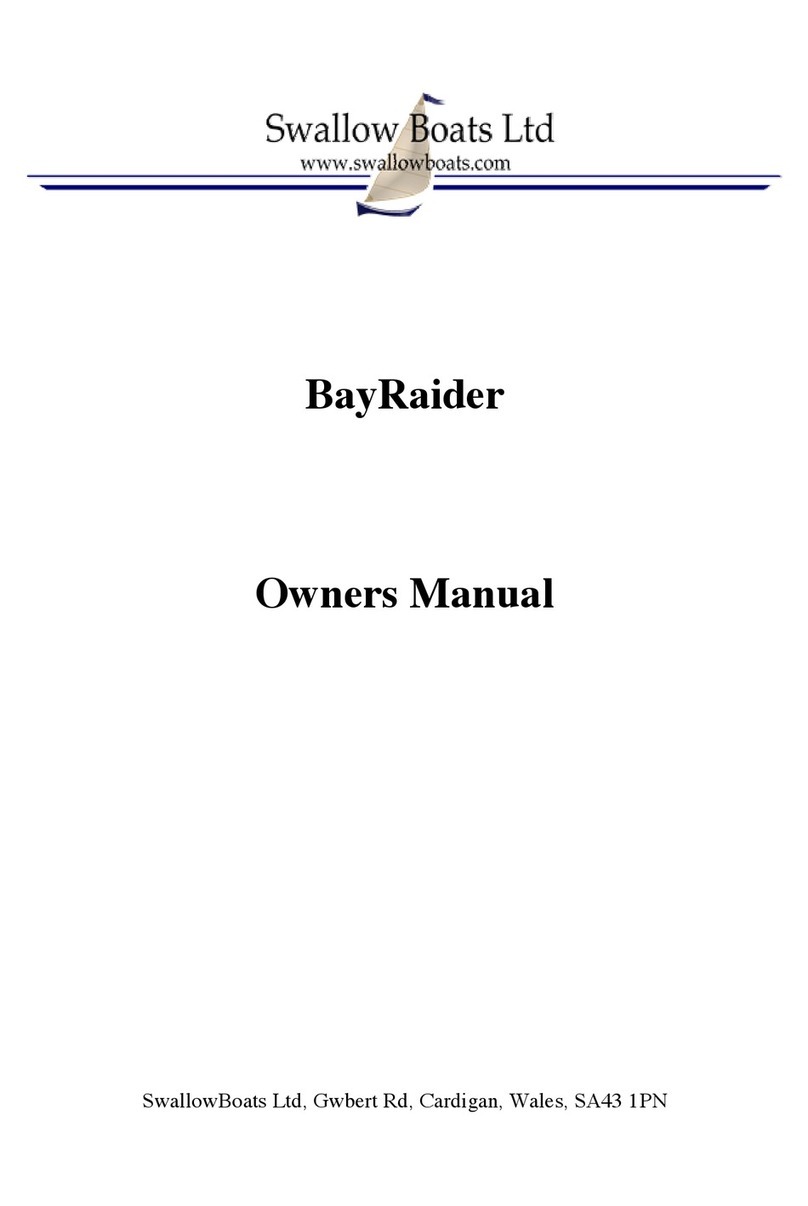
Swallow Boats
Swallow Boats BayRaider owner's manual
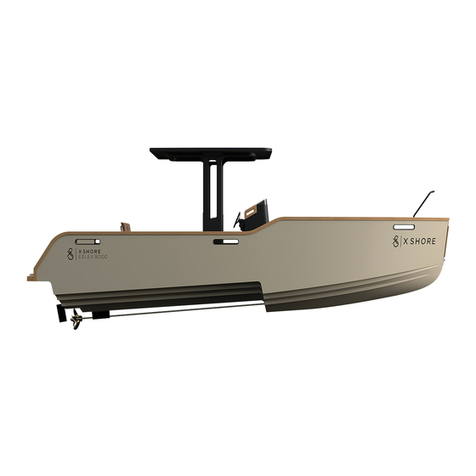
X SHORE
X SHORE EELEX 8000 owner's manual
